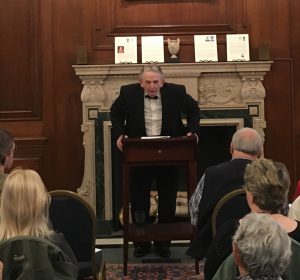 The Society’s Treat Rotunda was the setting Saturday for Gary Boyd Roberts’s seminar marking the publication of his new book, The Royal Descents of 900 Immigrants to the American Colonies, Québec, or the United States. More than thirty participants thronged the room to hear Gary’s reflections on new scholarship on Americans of royal descent; for the first time in the series, this volume also includes information on the royal lines of French-Canadians. The day concluded with a round table session featuring some of the scholars with whom Gary has collaborated in amassing his growing collection of notable Americans of royal descent. Continue reading Noble contributions
The Society’s Treat Rotunda was the setting Saturday for Gary Boyd Roberts’s seminar marking the publication of his new book, The Royal Descents of 900 Immigrants to the American Colonies, Québec, or the United States. More than thirty participants thronged the room to hear Gary’s reflections on new scholarship on Americans of royal descent; for the first time in the series, this volume also includes information on the royal lines of French-Canadians. The day concluded with a round table session featuring some of the scholars with whom Gary has collaborated in amassing his growing collection of notable Americans of royal descent. Continue reading Noble contributions
Category Archives: Genealogical Writing
Germans in the Queen City
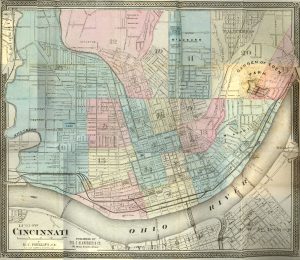 Founded in December 1788, Cincinnati has long been a city with a rich cultural heritage, forged largely from the influences of its significant immigrant populations. Situated at the junction of the Ohio and Licking Rivers, Cincinnati was viewed as a natural destination for immigrants who sought work in the city’s booming industries.
Founded in December 1788, Cincinnati has long been a city with a rich cultural heritage, forged largely from the influences of its significant immigrant populations. Situated at the junction of the Ohio and Licking Rivers, Cincinnati was viewed as a natural destination for immigrants who sought work in the city’s booming industries.
Initially, Cincinnati was settled largely by English and Scottish settlers who came westward from the east coast and north from Kentucky.[1] Continue reading Germans in the Queen City
ICYMI: Boston riches
[Author’s note: This blog post originally appeared in Vita Brevis on 23 February 2017.]
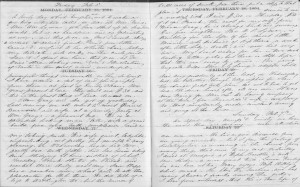
As I complete publishing excerpts from the 1865 volume, the final year in what I hope will be a single-volume account of the Civil War in the Hedwiga Regina Shober Gray diary, it seems like a good time to revisit a Gray diary primer from 2017.
Certain diaries, and their authors, become short-hand for a time and place: Samuel Pepys’s diary of seventeenth-century London, for example, or Anne Frank’s diary of wartime Amsterdam. The diaries of Philip Hone and George Templeton Strong are often invoked to cover the first half of the nineteenth century in New York; for the Civil War years, readers turn to Mary Boykin (Miller) Chesnut’s Diary from Dixie (1905). Continue reading ICYMI: Boston riches
Essayons
 At last, the cast of Volume 2 of Early Families of New England 1641-1700 is set. See below for a list of all fifty sketches.
At last, the cast of Volume 2 of Early Families of New England 1641-1700 is set. See below for a list of all fifty sketches.
The inventory includes five sets of siblings: John and Samuel Carter; Andrew and George Lane; Daniel, John, and Joseph Morse; Joshua and Thomas Scottow (and brother-in-law Robert Winsor); and John and Samuel Sherman.
Three women have sketches in this volume: Mary (Smith) (Glover) Hinckley, Jane (Conant) (Holgrave) Mason, and Amyas (Cole) (Thompson) Maverick, in addition to their husbands: Thomas Hinckley, Nathaniel Glover, Joshua Holgrave, and Samuel Maverick. Continue reading Essayons
Don’t fence me in
 I grew up on this long-time family-owned property next door to my paternal grandparents, Rex Church (1883–1956) and Winifred Lee (1884–1980). I saw them almost every day until their deaths, ate lunches and holiday meals with them, slept overnight there with my cousins, and saw them only as my grandparents. I suspect that, like many other people, I’ve only come to really know them as I piece together family stories.
I grew up on this long-time family-owned property next door to my paternal grandparents, Rex Church (1883–1956) and Winifred Lee (1884–1980). I saw them almost every day until their deaths, ate lunches and holiday meals with them, slept overnight there with my cousins, and saw them only as my grandparents. I suspect that, like many other people, I’ve only come to really know them as I piece together family stories.
Long after my grandparents’ deaths, my brother and I took on the task of clearing out the house in preparation for his renovations. I began to learn more about my grandparents the more old photos we found between pages of every book or magazine (I’m not sure who was reading the collected speeches of Andrew Jackson, but there it was), and taking down framed photos, mostly of grandchildren and great-grandchildren. Continue reading Don’t fence me in
Further ancestors of the Princess of Wales
 Finishing up the generation of the Princess of Wales’s great-great-great-great-grandparents – as part of a review of scholarship that has become available since Richard Evans’s book, The Ancestry of Diana, Princess of Wales, was published in 2007 – there is something more to be said about her matrilineal ancestress in that generation, Eliza Kewark (or Kevorkian) of Surat in the Indian state of Gujurat.[1]
Finishing up the generation of the Princess of Wales’s great-great-great-great-grandparents – as part of a review of scholarship that has become available since Richard Evans’s book, The Ancestry of Diana, Princess of Wales, was published in 2007 – there is something more to be said about her matrilineal ancestress in that generation, Eliza Kewark (or Kevorkian) of Surat in the Indian state of Gujurat.[1]
The daughter of Jakob Kevork/Hakob Kevorkian, and sister-in-law of Aratoon Baldassier (or Baldassarian), her voice may be heard in a series of letters she wrote to her partner (and, perhaps, husband) Theodore Forbes between 1812 and 1819; the last – concerning Forbes’s plan to send their daughter to his family in Scotland – strikes a formal note: Continue reading Further ancestors of the Princess of Wales
Volunteer appreciation
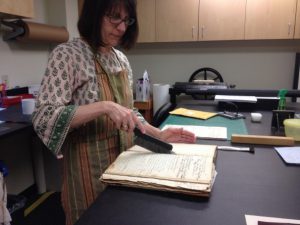
I started at NEHGS as a volunteer, coming in every Friday for about four hours. My first project involved checking the transcriptions of the names that other volunteers had made against other sources to help decipher some of the names. Often this involved me running up to the fifth floor, where the local histories are kept, or 7, where the genealogies are, to check spellings. After a few weeks I was familiar enough with the handwriting that I did not have to go use outside sources to verify the transcription. Not long afterwards, I began scanning a manuscript for Special Collections and then, as I was in library school at the time, working with actual collections and providing additional details for finding aids. Continue reading Volunteer appreciation
From Cento to America
 A few years ago, as I was looking into what NEHGS’ collection held on Italian research subjects, I came across a manuscript that was created in 1954 by a woman who was interested in documenting the Italians of Kingston, Massachusetts. The Coming of Italians to Kingston by Esther DiMarzo was digitized and is available on our web site. It covers those who first appeared in records in Kingston from about 1899 to 1912. Esther primarily relied on tax lists and vital records and, when possible, included a few stories and information from descendants who were still in Kingston at the time of her compilation. Continue reading From Cento to America
A few years ago, as I was looking into what NEHGS’ collection held on Italian research subjects, I came across a manuscript that was created in 1954 by a woman who was interested in documenting the Italians of Kingston, Massachusetts. The Coming of Italians to Kingston by Esther DiMarzo was digitized and is available on our web site. It covers those who first appeared in records in Kingston from about 1899 to 1912. Esther primarily relied on tax lists and vital records and, when possible, included a few stories and information from descendants who were still in Kingston at the time of her compilation. Continue reading From Cento to America
Tell me no lies
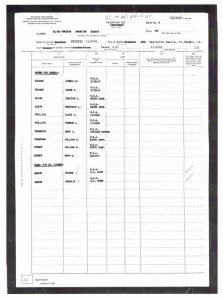
While researching family stories for verification (and, let’s face it, amusement), I began to think that we all face the same questions: “Huh?” turns into “Why did he/she/they do that?,” which morphs into “What?!,” which then becomes “What were they thinking?!?!” We look for the truth but often find muddled facts, conflicting stories, and outright prevarications.
I discovered with the help of a maternal cousin that one of our ancestors, Shadrack Ireland (1718–1780), was something of a rogue/cad/religious nut. Sure enough, when I read about his life, history knows him as a pipe maker, carpenter, and “religious leader” who espoused Perfectionism at the time of The Great Awakening, a Christian revival in the 1730s and ‘40s. Continue reading Tell me no lies
The widow of St. Casimir
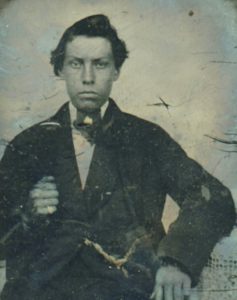
My sister-in-law Sue and I hoped we might uncover a backstory behind the marriage of her great-great-grandparents. Aimé Vallée, age 21, of St. Casimir, Québec, wed his third cousin, Marguerite Vallée, age 43, widow of François Trottier, mother of twelve children. François died in November 1844, age 69; Marguerite married Aimé three months later, with a dispensation omitting two additional banns of marriage. We sensed our curiosity might be allayed by visiting St. Casimir, midway between Trois Rivières and Québec City. Its splendid late nineteenth-century Catholic church attests to its central place in the life of that community and a long tradition of recording genealogy. Continue reading The widow of St. Casimir